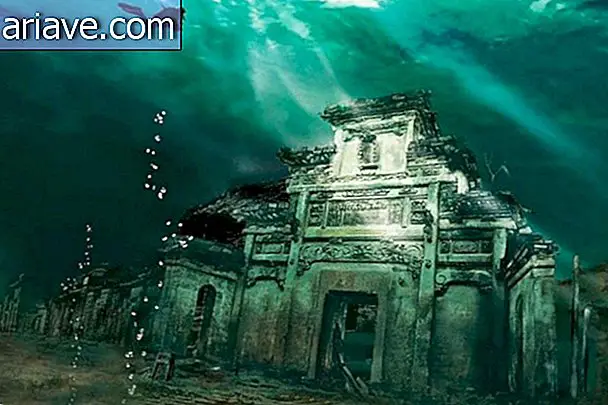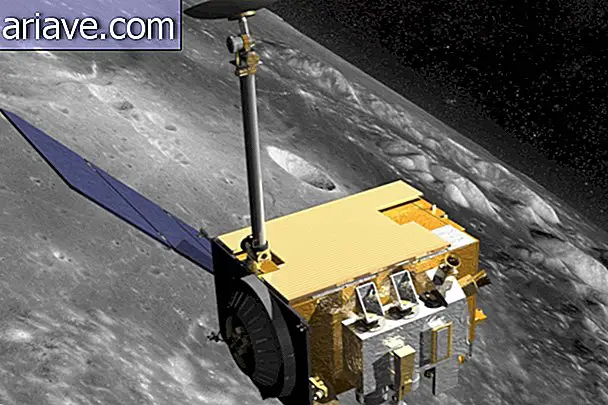7 Important Reasons for Conserving Arctic Ice
Global warming is a serious problem that has been worrying scientists around the world for a few decades. Since humanity began to warn of the problem, the consequences of the rising temperature of the planet are increasingly noticeable.
We have already published here in Mega Curious that Earth's gravity is suffering from this problem and yet it is causing an even more alarming situation in the Arctic Ocean region. Polar ice is also badly affected by global warming, and the problems it faces can have untold consequences for many people on the planet.
One of the species affected is polar bears, as we cover in the facts and curiosities about polar bears, and another is walruses, which, due to changes in the frozen ocean, are looking for new places to rest. What few people know is that the likely end of the Arctic Ocean ice can also cause severe damage to us humans.
According to a Mother Nature Network publication, Arctic sea ice is increasing and decreasing over the years, but the minimum volume average is 13% lower each decade. The information is from the National Oceanic and Atmospheric Administration (NOAA) and also reveals that in 2015 was the fourth worst record level. It should also be noted that in the last nine years have happened the nine worst months of September in history. Watch the video below to see the variation of the polar ice sheet this year.
But how can the shrinking, and to the end, of these glaciers influence human life? To answer this question, here are 7 important reasons for conserving Arctic ice:
1. It reflects sunlight
Due to its white color, the frozen sea is able to reflect sunlight, avoiding greater heat absorption. This reflectivity that makes sunlight hit the surface and return to space is called “albedo”.

With the process of shrinking the polar caps, a cycle is established in which the temperature only tends to rise. With the ice melting, the seawater is more exposed, retaining more and more heat waves, which will further reduce the ice and, consequently, the albedo, generating more warming.
2. Influences ocean currents
The influence of polar ice melting on ocean currents causes climate change worldwide. Even slowly, this process is called thermoaline circulation and happens with the ocean taking the heat down a global current. This current dictates sea and land climate patterns everywhere, always fueled by varying salt and warming levels in the regions where it passes.
This process is thus affected in two ways by melting Arctic ice. In one of them, the global heat flow suffers from the readjustment of its entire thermal gradient. In the other, wind patterns, which are also altered by shrinking ice at the poles, push more frozen sea to the Atlantic, where it becomes cold fresh water (salt is expelled in the freezing process).

With less salinity, the water becomes less dense and floats rather than sinking. This can stop the rising warm water flow from the tropics as the water sinks at high latitudes and the thermoaline circulation needs cold to function.
3. It isolates the air
According to the US National Snow and Ice Research Center, approximately half of the total heat exchange between the Arctic Ocean and the Atmosphere occurs through openings in the ice. This data shows how important glaciers are to maintain sea temperature, because even if very cold, it is still warmer than air in periods of intense cold, such as in winter. This factor works in conjunction with albedo to hold the weather in the polar regions.
4. Holds methane
We publish here in Mega a story that addresses the environmental problem that is happening with the release of methane in the atmosphere (click here to see). This fact also comes as an important reason for us to conserve the Arctic sea ice, after all gas is only released when the ice breaks. Unfortunately, methane is one of the main greenhouse gases, which contributes even more to global warming.
5. It limits severe weather
The decrease in polar ice directly influences the formation of storms and major weather phenomena. Even though it is a consensus of science that global warming generates harsher climates overall, the Arctic situation is also influenced by melting ice.

Polar ice sheets typically limit the amount of moisture that moves from the ocean to the atmosphere. This makes it hard for strong storms to form. As the amount of ice becomes smaller, these phenomena tend to form more easily and the waves of the Arctic Sea may get larger.
6. It houses and supports local populations
In addition to the possibility of erosion that is increasingly imminent, particularly in northern Alaska, where some 180 native communities have been identified as vulnerable to the problem, there is also a threat to their food sources. Most of these communities have a diet based on seals and other native animals, and the deterioration of Arctic sea ice, then, can make hunting somewhat difficult and dangerous.

There are many factors that pose risks to this practice. These include irregular climate change and its patterns and the possibility of thin layer breaking, and residents will have to wait much longer for ice to form in some regions.
7. Also the wildlife
As we mentioned at the beginning of the text and in the previous item, polar bears, seals and walruses suffer directly from the melting of the Arctic ice sheets. In addition, the rising heat harms these species, which are adapted to the characteristic cold of this region.

In addition, a smaller amount of polar ice contributes to a greater absorption of carbon dioxide from the air, removing a part of this element so harmful to the atmosphere. As positive as this picture sounds, excess gas is making water in some places very acidic, according to NOAA data. This can be potentially fatal for some species of marine life, such as shellfish, corals and some types of plankton.
Do you believe that we will be able to reverse the Arctic sea ice melting picture? Opine in the Curious Mega Forum











